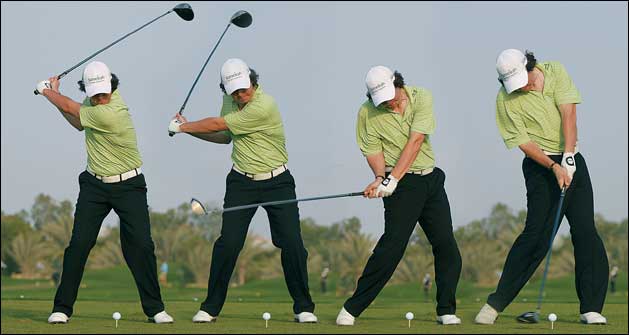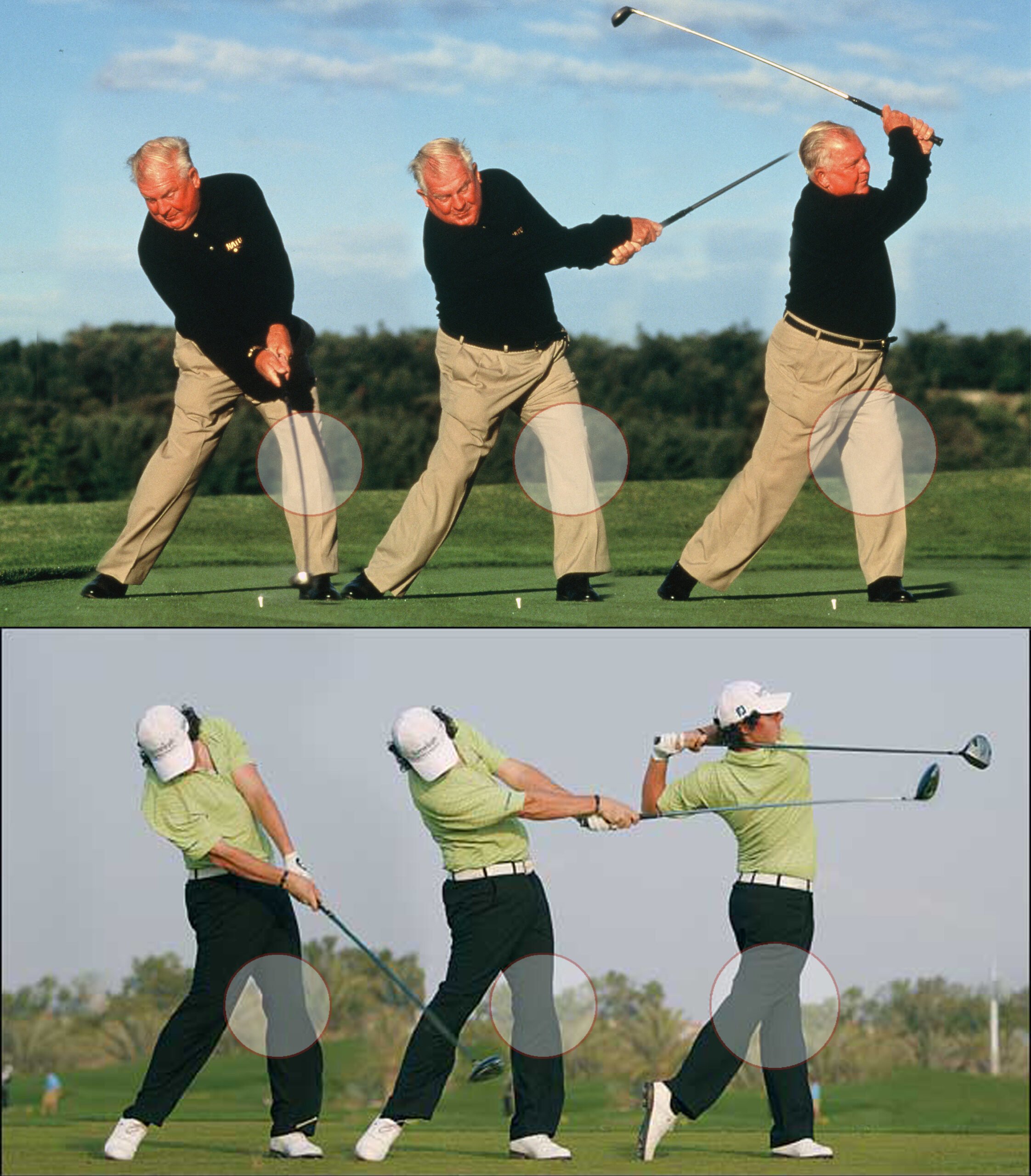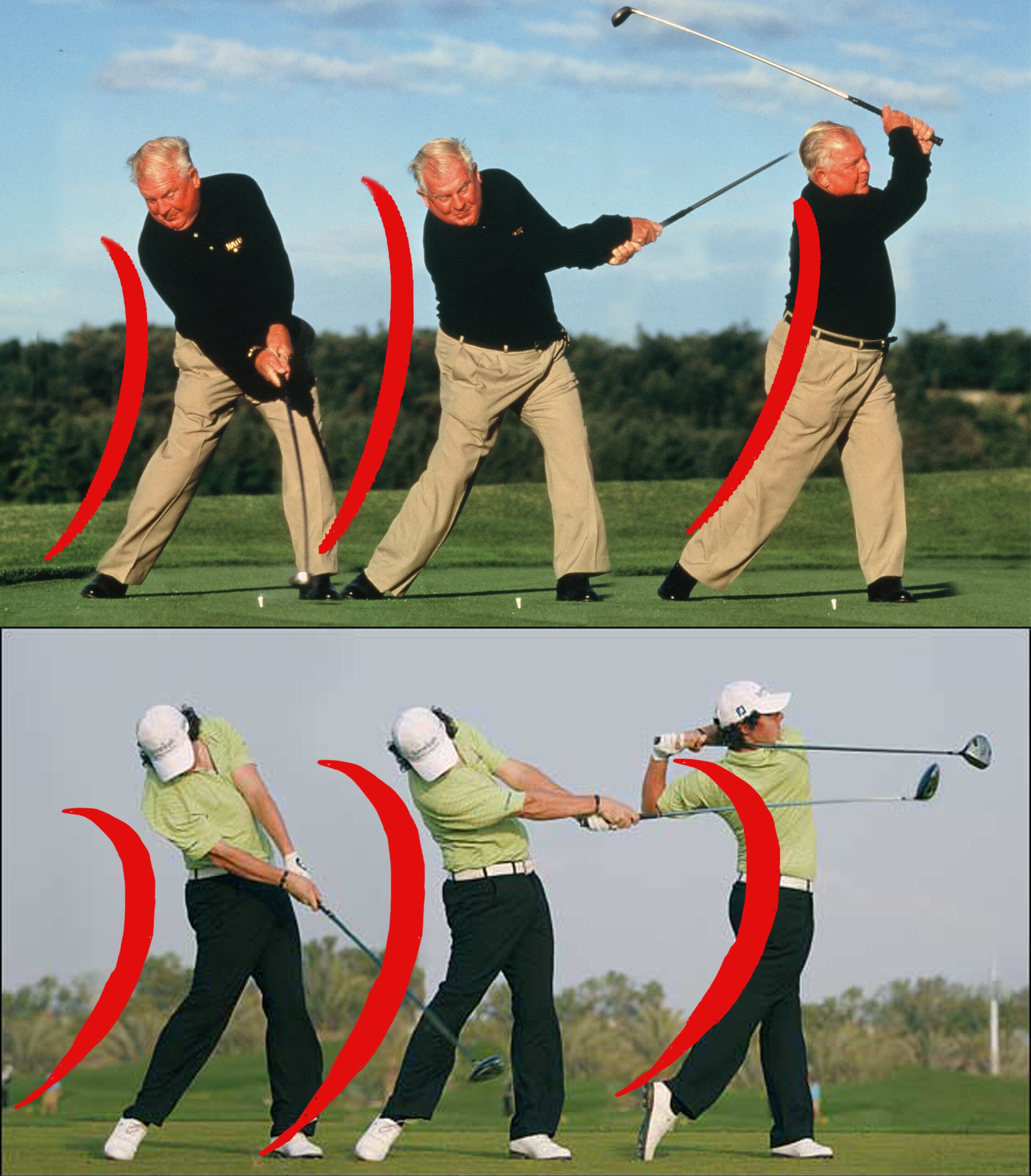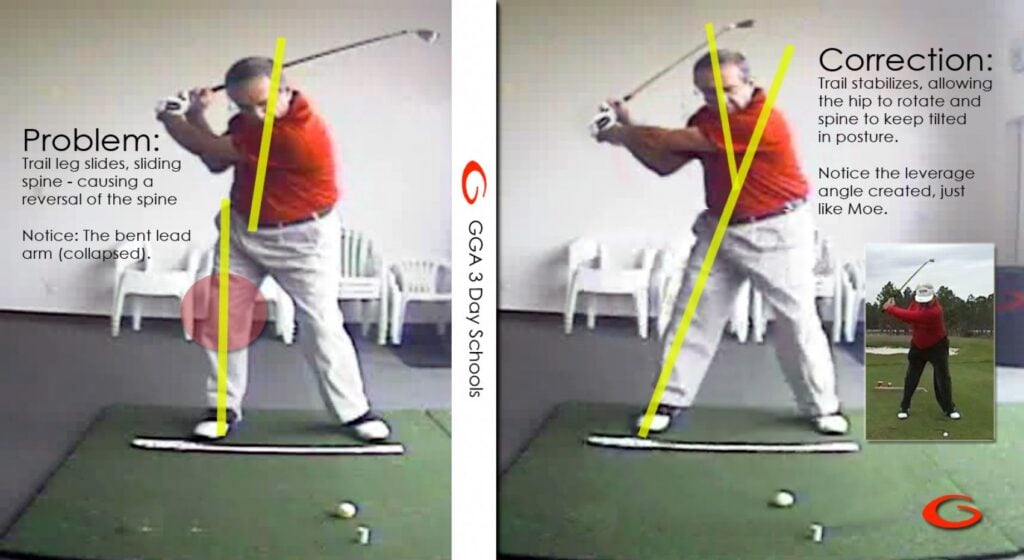Improving Your Move

Are you a consistent ball-striker when you play golf? Or, like so many golfers, do you have back problems? Do you slice the ball regularly? Do you sometimes hit the ground behind the ball – hitting it fat? Are there times when you hit the top of the ball hitting it thin? I bet you didn’t you know that improving the movement of your hips and legs (lower body) could fix any and all of these problems.
Here is a picture of Moe Norman at Impact. What I want you to notice is that his lower body has moved both downward and laterally toward the target. You can see the flex in his knees. There is one extremely important understanding that I want you and all golfers to know: how you move your lower body (from the hips down) affects your spine movement – and spine movement is absolutely central to every single movement of your body.
I want you to think of the movement of the body during the swing as similar to dominos stacked into a line. Once you put the first domino in motion, there is a chain reaction. This chain reaction of one domino affecting the next one in line is similar to what happens when you begin the movement of your lower body during the swing. Once you move your legs and hips, you position the lower spine which then affects how you are able to move every other part of your body including your shoulders, arms, hands and ultimately – the club.
There is a critical connection between your lower and upper body
In this anatomical picture, you can see the hip flexors (muscles attached inside the hip joint) attach to the inside of the leg bone (femur) and the attach on the inside of the pelvis. If you look closely at the pelvis, you can see that the lower spine is attached to the pelvis in the Sacrum area.
The muscles that are attached to the pelvis attach to the legs and the spine. This is a critical juncture of your body – what I call the kinetic link. You can see by the numerous muscles and attachments that if you improperly move the muscles of the legs and hips, you directly affect the spine.
This critical connection between lower body and upper body – centered around the hips – is the focus of our latest instructional product – the “Improve your Move” (IYM) Training Video.
Groundbreaking Instruction
If you want to hit the ball better you must move the golf club better and faster, what we consider on-plane. Improving your lower body move gets to the causes of your golf swing problems which makes our latest product the GGA “Improve Your Move” video instructionally ground-breaking. I haven’t been this excited about an instructional product since the best-selling Single Plane Solution Video. Why? Because this video is more than just golf instruction, explaining the mechanics of what to do.

This video shows you how to train the movements you must have during the golf swing. The IYM video trains you, making it a “doing” video.
Good instructional videos show you the important mechanical movements of the swing, the IYM video goes beyond the mechanics, and shows you exactly how to train the movement behind the mechanics. Similar to difference between understanding how the pieces of a motor works, and being the motor, the IYM video demonstrates that you are the motor of your golf swing and now you can start fine tuning yourself for perfect movement.
Here are some of the areas covered inside the IYM Training video:
Specific exercises to help you gain the strength and flexibility of your lower body including: the Knee Roll, Advanced Hip Roll, Squat Stretch, Chair Twists, Leg Swings, Forward Leg Raises, Side Leg Raises/Side Leg Swings, Arm Circles, Arm Swings and the Side Step exercise.
Also included are golf training exercise including: Single Plane Training and Position and Movement training using the PVC Stretch Drill, Weight Shift Drill and Elbow to Hip Drill.
To enhance your golf position training you will also learn to train with the PVC positions including Positions 0-2, Position 0 to 3 and Position 0 to 4 drills. You will also train with a golf club mastering your backswing with posture training. And to master what Moe called his “vertical drop” we have designed the “bag in the chair” drill to help you train the movement of the lower body to get the trail hip forward allowing the arms to drop vertically.
Then, to help you understand how the legs move you laterally, you will learn the “Step Swing to Impact” drill which will Train you how to move into your lead side. All of these drills will help you reach the purpose of the IYM video – which is to separate the upper body from the lower body.
I firmly believe that there is no better training to help you become a better ball-striker (get to impact) than mastering your lower body move. Yes, the grip, hand action and arm motion are very important but nothing will advance you further than if you Improve Your Move with the lower body training found in this video.







